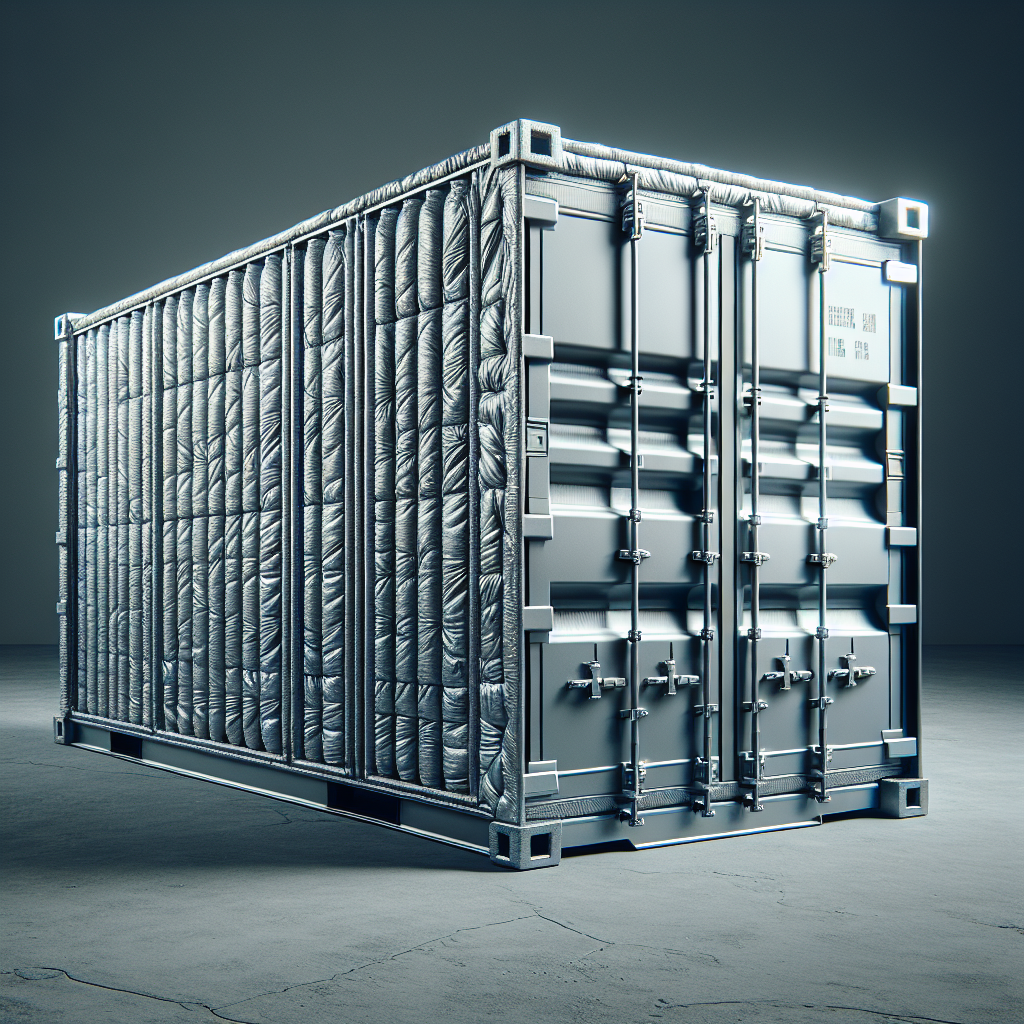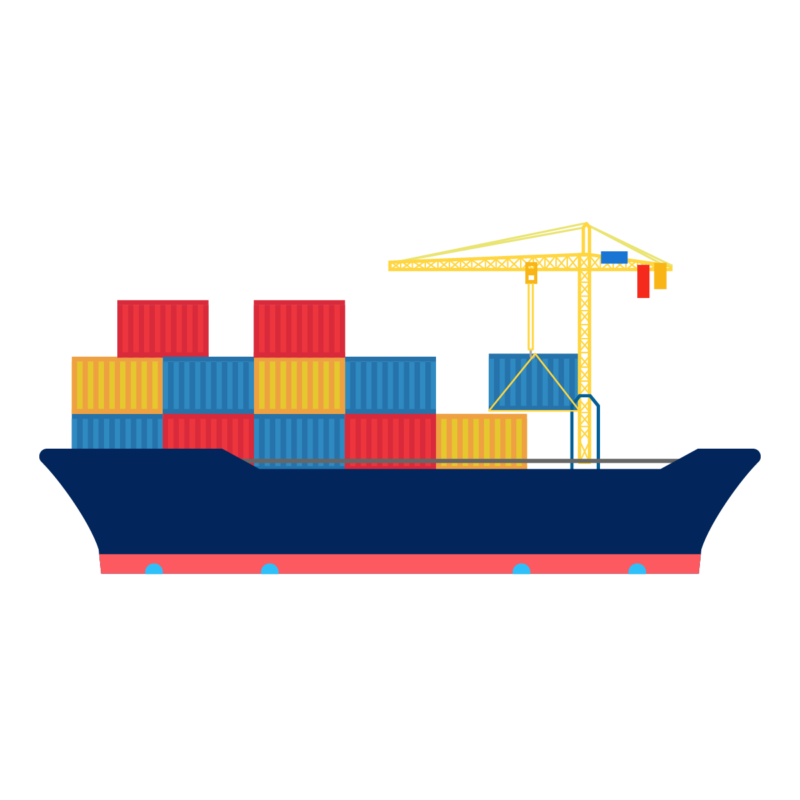Uncategorized
insulated shipping container
Benefits of Using Insulated Shipping Containers for Food and Beverage Transportation
Insulated shipping containers have become increasingly popular in recent years, especially in the food and beverage industry. These containers are designed to maintain a consistent temperature, protecting perishable goods during transportation. In this article, we will explore the benefits of using insulated shipping containers for food and beverage transportation.
One of the main advantages of insulated shipping containers is their ability to regulate temperature. These containers are equipped with insulation materials, such as foam or fiberglass, which help to maintain a consistent temperature inside the container. This is crucial for transporting food and beverages, as they are highly sensitive to temperature changes. With an insulated shipping container, the risk of spoilage or contamination due to temperature fluctuations is significantly reduced.
Moreover, insulated shipping containers are designed to withstand extreme temperatures. Whether it is scorching hot or freezing cold outside, the temperature inside the container remains stable. This is particularly important for long-distance transportation, where the goods may be exposed to varying weather conditions. With an insulated shipping container, food and beverages can be safely transported without the risk of spoilage or damage.
Another benefit of using insulated shipping containers is their durability. These containers are made from high-quality materials, such as steel or aluminum, which are designed to withstand the rigors of transportation. They are also built to be weather-resistant, protecting the goods inside from rain, snow, and other harsh weather conditions. This makes them ideal for long-distance transportation, where the goods may be exposed to different climates and environments.
In addition to temperature regulation and durability, insulated shipping containers also offer excellent security for food and beverage transportation. These containers are designed to be airtight, preventing any outside elements from entering the container. This is crucial for perishable goods, as exposure to air can lead to spoilage and contamination. With an insulated shipping container, the goods are protected from external factors, ensuring their safety and quality.
Furthermore, insulated shipping containers are also designed to be stackable. This means that they can be easily stacked on top of each other, maximizing the use of space during transportation. This is particularly beneficial for businesses that need to transport large quantities of goods. By using insulated shipping containers, they can save on transportation costs by maximizing the use of space and reducing the number of trips needed.
Another advantage of using insulated shipping containers is their versatility. These containers can be used for a wide range of food and beverage products, including fresh produce, dairy products, and frozen goods. They are also suitable for transporting beverages, such as wine and beer, as they can maintain a consistent temperature throughout the journey. This versatility makes insulated shipping containers a popular choice for businesses in the food and beverage industry.
Last but not least, using insulated shipping containers can also have a positive impact on the environment. These containers are reusable and can last for many years, reducing the need for single-use packaging materials. This not only reduces waste but also helps to lower the carbon footprint of transportation. By using insulated shipping containers, businesses can contribute to a more sustainable and eco-friendly approach to food and beverage transportation.
In conclusion, insulated shipping containers offer numerous benefits for food and beverage transportation. From temperature regulation and durability to security and versatility, these containers provide a reliable and efficient solution for businesses in the industry. With the added bonus of being environmentally friendly, it is no wonder that more and more businesses are opting for insulated shipping containers for their transportation needs.
How Insulated Shipping Containers Can Help Reduce Carbon Footprint in the Logistics Industry

The logistics industry plays a crucial role in the global economy, facilitating the movement of goods and products from one place to another. However, with the increasing concern for the environment, there is a growing need for the industry to reduce its carbon footprint. One solution that has gained popularity in recent years is the use of insulated shipping containers.
Insulated shipping containers are specially designed containers that are used to transport temperature-sensitive goods such as food, pharmaceuticals, and chemicals. These containers are made with insulating materials that help maintain a consistent temperature inside, protecting the goods from extreme temperatures during transportation. But how exactly do these containers help reduce the carbon footprint in the logistics industry?
Firstly, insulated shipping containers help reduce the need for refrigerated trucks and warehouses. Traditionally, temperature-sensitive goods were transported in refrigerated trucks, which consume a significant amount of energy. These trucks require a constant supply of electricity to maintain the desired temperature, resulting in high carbon emissions. With insulated shipping containers, goods can be transported in regular trucks, eliminating the need for refrigerated trucks and reducing carbon emissions.
Moreover, insulated shipping containers also reduce the need for refrigerated warehouses. These warehouses are used to store temperature-sensitive goods before they are transported. However, with the use of insulated containers, goods can be stored in a temperature-controlled environment, eliminating the need for refrigerated warehouses. This not only reduces carbon emissions but also saves on energy costs for companies.
Another way insulated shipping containers help reduce the carbon footprint is by reducing food waste. According to the Food and Agriculture Organization of the United Nations, approximately one-third of all food produced in the world is wasted. One of the main reasons for this is the lack of proper temperature control during transportation. With traditional shipping methods, food can spoil due to exposure to extreme temperatures. However, with insulated shipping containers, food can be transported at the required temperature, reducing the chances of spoilage and ultimately reducing food waste.
In addition to reducing carbon emissions, insulated shipping containers also have a positive impact on the environment in other ways. For instance, these containers are made with recyclable materials, making them a more sustainable option compared to traditional shipping methods. They also have a longer lifespan, reducing the need for frequent replacements and ultimately reducing waste.
Furthermore, the use of insulated shipping containers can also help reduce the carbon footprint in the supply chain. With traditional shipping methods, goods may need to be transported in multiple stages, with each stage requiring a different mode of transportation. This results in higher carbon emissions. However, with insulated containers, goods can be transported directly from the manufacturer to the end destination, reducing the number of transportation stages and ultimately reducing carbon emissions.
In conclusion, insulated shipping containers have proven to be an effective solution in reducing the carbon footprint in the logistics industry. They not only reduce the need for refrigerated trucks and warehouses but also help reduce food waste and have a positive impact on the environment. As the world continues to prioritize sustainability, the use of insulated shipping containers is expected to increase, making the logistics industry more environmentally friendly.
Innovative Uses of Insulated Shipping Containers in Construction and Housing Projects
Insulated shipping containers have long been used for their practicality in transporting goods across long distances. However, in recent years, these containers have also gained popularity in the construction and housing industry for their innovative uses. With their sturdy structure, weather-resistant properties, and customizable features, insulated shipping containers have become a cost-effective and sustainable solution for various construction and housing projects.
One of the most significant advantages of using insulated shipping containers in construction is their durability. These containers are designed to withstand harsh weather conditions and rough handling during transportation. As a result, they are incredibly sturdy and can withstand extreme temperatures, making them ideal for use in various climates. This durability also translates to a longer lifespan, making them a more sustainable option compared to traditional building materials.
Moreover, insulated shipping containers are highly customizable, making them suitable for a wide range of construction and housing projects. These containers come in various sizes, from 10 feet to 40 feet, and can be stacked or joined together to create larger structures. This versatility allows for endless possibilities in design and layout, making them a popular choice for architects and builders.
One of the most innovative uses of insulated shipping containers in construction is their conversion into homes and offices. With the rising demand for affordable and sustainable housing, these containers offer a viable solution. They can be easily transformed into comfortable living spaces, complete with insulation, plumbing, and electricity. This conversion process is also relatively quick and cost-effective compared to traditional construction methods, making it an attractive option for those on a tight budget.
In addition to housing, insulated shipping containers have also been used in the construction of commercial and industrial buildings. These containers can be modified to include windows, doors, and ventilation systems, making them suitable for use as offices, retail spaces, and even restaurants. Their sturdy structure also makes them ideal for use in industrial settings, such as warehouses and storage facilities.
Another innovative use of insulated shipping containers in construction is their incorporation into modular building systems. These systems involve prefabricated components that can be easily assembled on-site, reducing construction time and costs. Insulated shipping containers are a perfect fit for this type of construction, as they can be easily transported and assembled in a fraction of the time it takes to build a traditional structure. This method has been used in the construction of schools, hospitals, and even entire housing developments.
Apart from their use in construction, insulated shipping containers have also been utilized in housing projects for their portability. These containers can be easily transported to remote or hard-to-reach areas, making them an ideal solution for disaster relief housing. They have been used in various disaster-stricken areas, providing temporary shelter for those in need.
In conclusion, insulated shipping containers have proven to be a versatile and innovative solution in the construction and housing industry. Their durability, customization options, and portability make them a cost-effective and sustainable choice for various projects. As the demand for affordable and eco-friendly construction continues to rise, we will likely see more creative uses of insulated shipping containers in the future.

